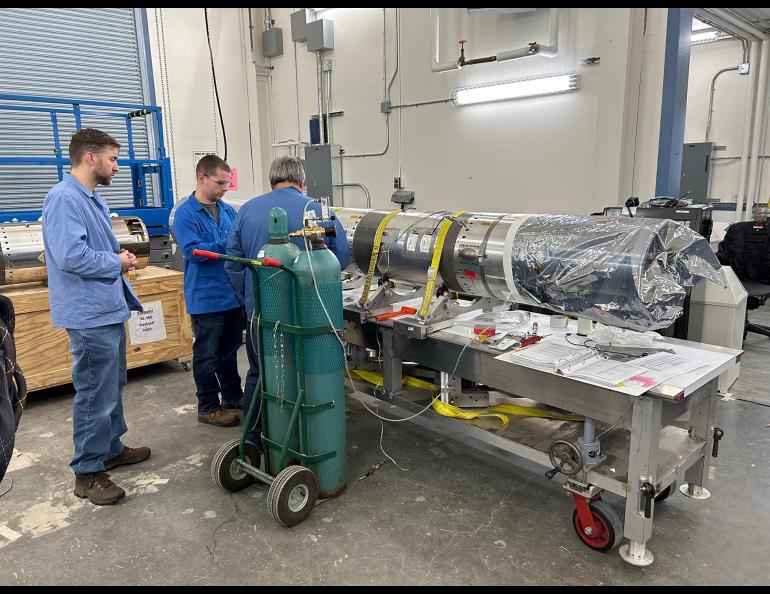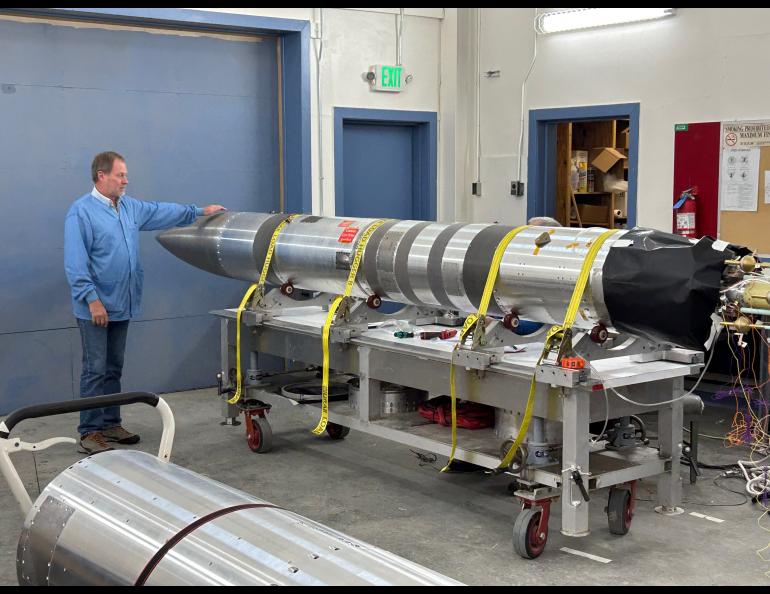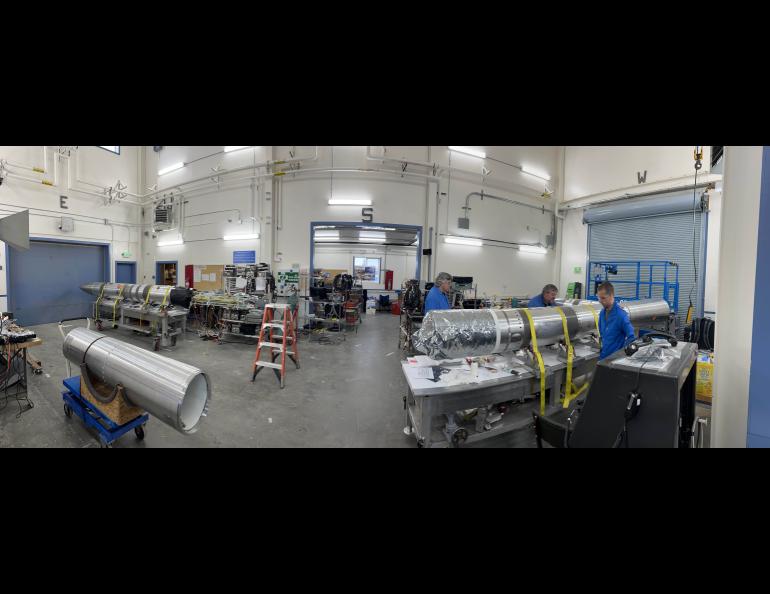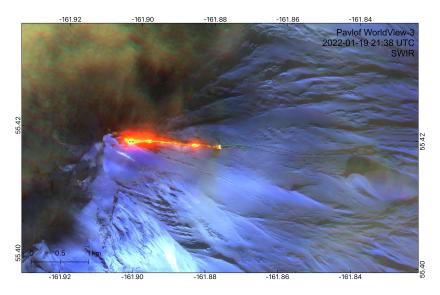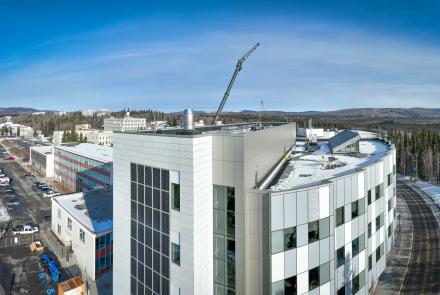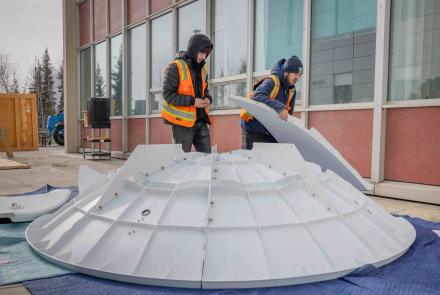Testing a theory about cleaning up after a nuclear detonation in space and learning more about winds at the edge of Earth’s atmosphere are the goals of two NASA sounding rocket launches this month at Poker Flat Research Range.
The two-week launch window for the flights opens Sunday.
The University of Alaska Fairbanks Geophysical Institute owns Poker Flat, located at Mile 30 Steese Highway, and operates it under a contract with NASA’s Wallops Flight Facility, which is part of the Goddard Space Flight Center.
Mission: Dissipation
Mehdi Benna, an aeronomist and planetary scientist at the University of Maryland, Baltimore County and NASA’s Goddard Space Flight Center, is leading a sounding rocket experiment to learn how solar wind charged particles dissipate their energy in the high latitude ionosphere-thermosphere, a region about 62 to 186 miles above the surface and at latitudes above 65 degrees.
The experiment, named Dissipation, could lead to a greater understanding of the processes creating high-latitude wind near the edge of space. That wind greatly influences the regulation and redistribution of mass, momentum, and energy in the ionosphere-thermosphere around the globe, and that means it has a significant role in space weather.
Improved space weather forecasting has become increasingly important to operators of satellites, communications and navigation systems, and power grids, all of which can be damaged or disrupted by space weather.
One way space weather occurs is when electrically charged solar wind particles are accelerated along Earth’s magnetic field lines and eventually strike the planet's atmosphere at high latitude. When they eventually hit the atmosphere they heat the gas and modify the chemistry.
“They encounter the higher density of atmospheric atoms and molecules, with the result of heating them,” Benna said.
The impacts also create light that we see from the ground as the aurora.
The atmospheric heating caused by the rain of charged particles increases the pressure in those regions, creating imbalances that drive winds in the neutral gas.
However, a small fraction of the upper atmospheric particles are not neutral. This population of ionized particles constitutes the ionosphere and responds to the forces of the magnetic and electric fields. This flow of ions, however, is hindered and altered by neutral winds.
It all makes for a complex atomic tug of war that scientists want to know more about as they strive to better understand space weather processes.
“We understand roughly what the forces at play are,” Benna said. “What we don't understand are the parameters that drive that relationship, that tug of war.”
A two-stage rocket will carry Benna’s instruments into an aurora to obtain the first direct and simultaneous measurements of factors influencing that particle custody battle: temperature, wind, and chemical composition. Previous rocket experiments have measured these quantities only in isolation. Instruments will also measure parameters such as magnetic field strength and precipitating ions.
The experiment is somewhat of a dress rehearsal for NASA’s Geospace Dynamics Constellation mission, a string of satellites designed to continue the study of the interface between Earth’s atmosphere and space. Benna is the principal investigator for GDC’s Modular Spectrometer for Atmosphere and Ionosphere Characterization, or MoSAIC, instrument. A similar instrument is aboard the Dissipation rocket set to launch from Poker Flat.
“The exciting thing about our Poker Flat mission is that, in addition to carrying one of the instruments of GDC, it will be performing the same science at a smaller temporal and spatial scale,” Benna said. “It will give us an early taste of what the GDC data will look like.”
UAF associate professor Mark Conde is a co-investigator on Benna’s Poker Flat launch and is also on the GDC MoSAIC team. Poker Flat chief scientist Don Hampton is also a co-investigator in the Dissipation experiment.
Mission: Beam-PIE
Geoff Reeves, chief scientist for intelligence and space research at Los Alamos National Laboratory, is heading an experiment that could, in the future, lead to a way to clean up near-Earth space after a nuclear detonation at the edge of the planet’s atmosphere. The cleanup would make space safer for satellites.
The experiment, named Beam-Plasma Interactions Experiment, will generate very low frequency radio waves using a pulsed electron beam. That will cause charged particles to rain down from space, along Earth’s magnetic field lines, and into the upper atmosphere.
Such a process might someday help remove charged particles from space after a nuclear explosion. Particles from an explosion would not reach the ground or be radioactive, Reeves said.
“This is not a technology where five or 10 years from now we will have the ability to get rid of an artificial radiation belt,” Reeves said. “We’re at the early stages of testing the technology and testing the theory.”
Nuclear testing in the atmosphere has been banned since 1963, but in July 1962 the U.S. Atomic Energy Commission launched a nuclear warhead from a Pacific Ocean atoll and detonated it 250 miles overhead. The explosion of the Starfish Prime experiment created an artificial aurora — and an artificial radiation belt.
The explosion also increased the electron intensity of the inner of the two natural Van Allen Radiation Belts that surround Earth. Those belts consist of high-energy solar radiation particles trapped within the planet’s protective magnetosphere.
“The artificial radiation belt of the Starfish explosion wiped out a third of all of the satellites operating at the time,” Reeves said.
A four-stage rocket will launch northward, reaching an altitude of 280 miles and landing about 60 miles north of Alaska’s Arctic Ocean coast.
The rocket will carry two payloads: One will hold an electron accelerator to create the beam, another will carry radio wave receivers and instruments to measure plasma conditions. Plasma is a hot gas formed of electrically charged particles.
Reeves will need a clear night with no aurora over Alaska to conduct the test. That’s because the aurora also produces radio waves, which would interfere with the experiment.
It’s also because the experiment might create something visual but faint. Electrons precipitating from the edge of space along Earth’s magnetic field lines create the aurora, and Reeves’ experiment could create something small that cameras at ground stations at Fort Yukon, Venetie and Toolik Field Station could capture.
“Our electron beam will be directed down toward the atmosphere,” Reeves said. “And when it hits the atmosphere, it should make optical emissions very much like when electrons hit the atmosphere and make the aurora.”
Will Alaskans be able to see it?
“I don’t think so,” he said. “But I’m not sure.”
Poker Flat Research Range staff are working on providing a live feed either with video and audio or audio only. Visit the PFRR Facebook page for more information.

